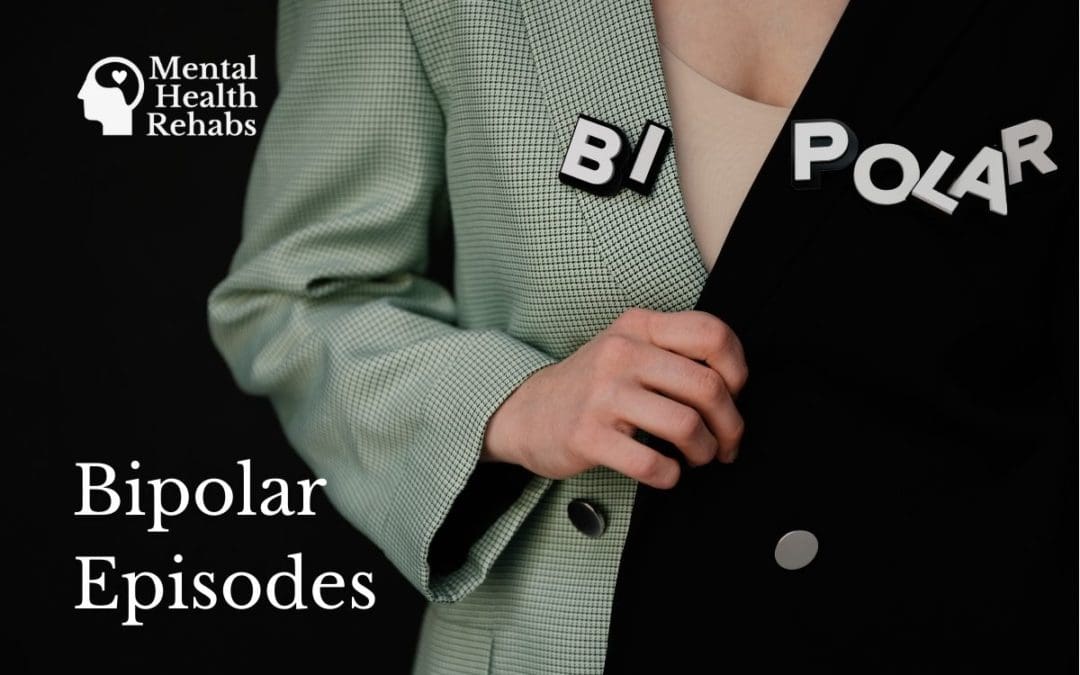Bipolar disorder is a mental illness estimated to affect 4.4% of Americans. Unfortunately, this serious mental illness is one shrouded with misconceptions that have resulted in harmful stigmas that have been difficult to shake. One of the best ways to reduce the emotional and social challenges that accompany this disorder is to gain a better understanding of what bipolar disorder is, recognize the symptoms, and learn the appropriate way to respond to individuals with this condition. The most recognizable symptom of bipolar disorder is bipolar episodes, and as such, makes knowing what is a bipolar episode the best place to begin.
What is a bipolar episode?
Bipolar disorder is a mood disorder characterized by extreme mood swings as well as drastic shifts in energy, concentration, and motivation. These mood swings oscillate between emotional highs (mania) and lows (depression) and cause noticeable differences in a person’s normal behavior.
A bipolar episode is the cycling of mania followed by depression. However, the patterns and frequency of these cycles can vary, as can the actual length of the bipolar episodes and the time in between them.
What is a bipolar manic episode?
The highs are known as manic episodes or mania, a condition of abnormally elevated mood and energy levels. During these periods, individuals may feel exceptionally powerful, confident, and important as well as euphorically happy or excited.
They can cause abnormally high levels of energy that leave individuals feeling well-rested even with little to no sleep. They may become very talkative and have racing thoughts, leaving them to feel extremely sociable or productive during this time. However, mania can also be accompanied by difficulty staying focused or staying still, and impulsive behavior with little thought to the consequences.
While manic episodes may have the individual feeling great, the combination of symptoms can have a harmful impact on their social life, financial well-being, and even physical health. Severe mania often requires medical treatment at a hospital and can be very disruptive to everyday life. Hypomania is a lesser form of mania that is less intense and more manageable but much more difficult to detect. This form of mania is more common in women, and as such, significantly contributes to underdiagnosing.
What is a bipolar depressive episode?
The lows are known as depressive episodes, where symptoms closely resemble that of clinical depression. Individuals may feel hopeless, apathetic, or guilty. They may lose interest in eating and other activities they usually enjoy, have difficulty sleeping and staying asleep, and experience suicidal thoughts. Bipolar disorder is often misdiagnosed as depression. Sometimes, individuals may experience both the highs and lows within a single episode which is known as mixed features (but was previously referred to as ‘mixed episodes’).
How long do bipolar episodes last?
The length of manic and depressive episodes can vary greatly. A single one can last as little as a few hours or persist for days, weeks, months, or even years. There are three types of bipolar disorder that can help provide insight into the patterns when bipolar episodes occur.
Bipolar I disorder is defined by episodes of mania that last at least 7 days or are severe enough to warrant hospitalization. The following depressive episode usually lasts around two weeks. Bipolar II disorder is similar but with episodes of hypomania, rather than full-blown mania. On average, bipolar I episodes lasted an average of 13 weeks with one or two cycles a year.
Cyclothymia is a form of bipolar disorder where hypomania is followed by depressive episodes that last up to 2 years (or 1 year in children and teens).
Rapid cycling is when a person repeatedly swings from one mood extreme to the other, without a stabilized “neutral” period (a period during which mania or depression is not occurring). Other definitions specify rapid cycling to be at least four circles during a 12-month period. Those who experience both mania and depression within a month period experience what is known as ultra-rapid cycling. Ultradian is when individuals experience the cycle within a 24-hour period, which can be difficult to distinguish from a mixed episode.
What can trigger bipolar episodes?
Bipolar episode patterns aren’t necessarily permanent and can vary in frequency and intensity throughout a person’s lifetime. However, there are several factors that are known to trigger a bipolar episode. Stress is the most notable one–and can be the most difficult to avoid. A fight with a loved one, the passing of a family member, or pressure at work could all be catalysts. Other potential triggers include:
- Certain medications such as antidepressants
- Alcohol or drug use
- Menstruation or pregnancy
- Hormonal conditions
- Change of the seasons
- Lack of sleep
If you or a loved one is struggling to manage bipolar disorder, speak to a mental health professional today.

